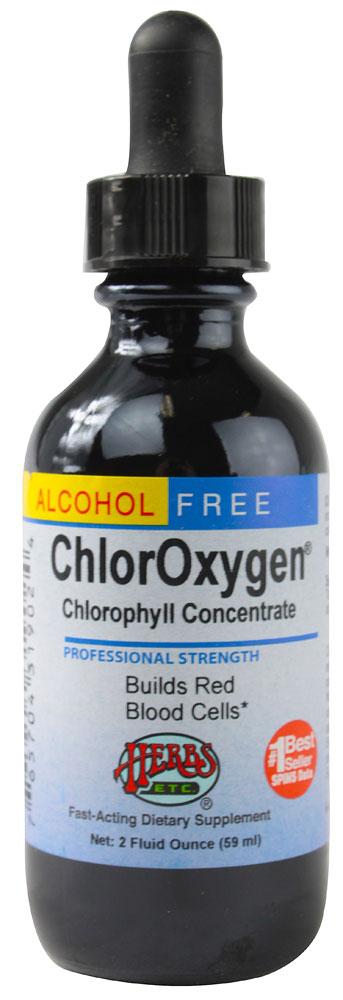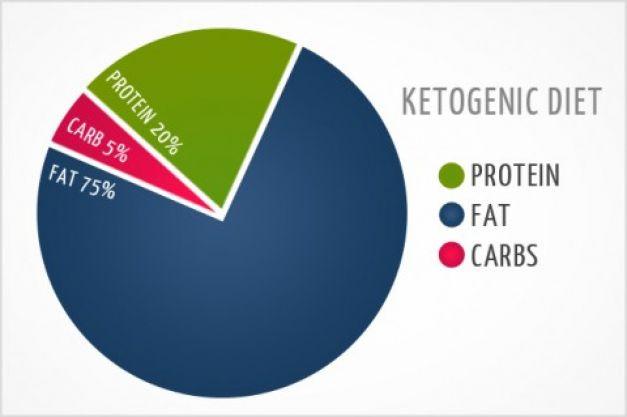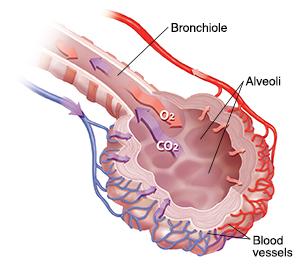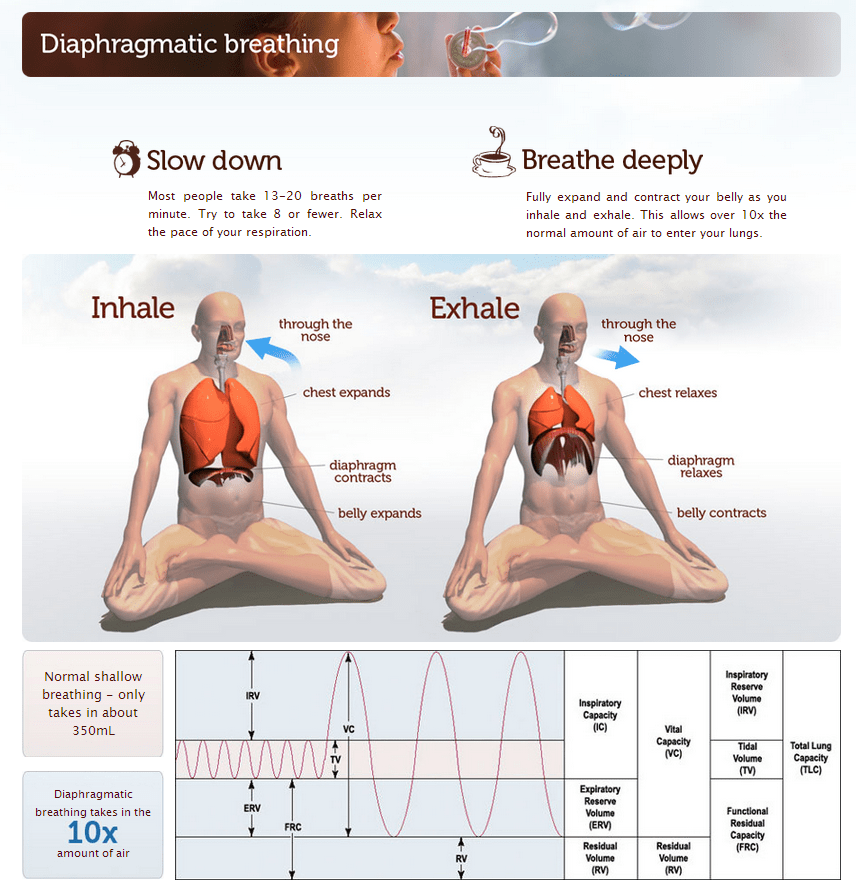Your LUNGS are your primary DETOX organ. On every inhale your lungs take in oxygen and transfer it to your blood which carries it to your cells. On the exhale, the lungs release CO2 and toxins from the blood into the air. Of course, clean air and good oxygen levels are essential to wellness. These 24 techniques are my top keys to resilient health – right up there with a positive attitude.
Where do you live? What’s the air quality in your neighborhood and in your home? Sometimes we need to make big changes for our health. In a perfect world your cells will be rich in oxygen, rejuvenated every night as you sleep. Optimum oxygen levels give you high energy, enhance brain function, and lower stress. You can overcome fatigue easily, you look and feel younger. A low oxygen environment deprives the cells of essential nutrients needed for energy to clean and rebuild. As a result, our body fluids and blood can become dirty and toxic.
Lack of oxygen weakens every single body system and is the main cause of disease. It weakens the immune system, which can lead to viral infections, DNA mutations, pathogenic bacteria, inflammation, heart disease, toxic buildup in blood, and premature aging.
What Causes Low Oxygen?
The most common cause of low oxygen is a poor level of fitness. this causes lack of blood and oxygen flow to the cells. Other causes of low oxygen include Acid body pH, Fatigue, Airborne Toxins, Sleep apnea, High Altitude, Poor nutrition, Anemia, Respiratory ailments, and Stress.
“The #1 primary cause of low blood oxygen is: The buildup of carcinogens and other toxins within and around cells, which blocks and then damages the cellular oxygen respiration mechanism.” Nobel Prize-winner Otto Wahrburg
Poor blood oxygenation is the #1 cause of declining health and disease.
24 Ways to DETOX and OXYGENATE Your Whole Body:
-
#1 is Physical Exercise with Deep Breathing!
That’s right! Physical exercise with deep breathing is the #1 NUMBER ONE way to DETOX the body. That’s because the lungs are a PRIMARY DETOX ORGAN.. Your oxygen – blood exchange happens in the tiny alveoli sacs of the lungs. Oxygen goes into the arteries and is transported as nourishment to all your cells. Veinous blood brings toxins back to the heart, and much of it can be exhaled from the lungs. Once your blood is moving, your body will filter and clean it in myriad ways via the lymph, liver, and kidneys to name a few. Our only job is to USE this mechanism to exercise, breathe deep, and get the system moving.
The beneficial effects of physical exercise on your neurobiology are enormous and help optimize all body systems. I could talk all day about cognitive functions, healthy gene expression, neuroplasticity and behavioral change. Long term benefits of cardiovascular exercise include increased neuron growth, better stress coping, enhanced memory, and improved cognitive performance at all ages.
Regular aerobic exercise improves all degenerative nervous system disorders including Alzheimer’s, Parkinson’s, schizophrenia, drug addiction, diabetic neuropathy, and cancer. Long-term aerobic exercise consistently shows positive epigenetic changes that bring reduced stress, improved memory and response time.
To get in shape, you need to challenge your body through movement 3 times a week or so – not every day. Don’t overdo it, but rather slowly build your regime. Intermittent exercise allows time for your body to repair and adjust to your new level of fitness comfortably. For example, if your fitness goal is to walk 15 miles a week at a fast pace, start with one mile 3x a week, and increase slowly to 5 miles 3 x a week to reach your goal. Getting in shape takes time and patience. Be careful. Warm up before you start, cool down at the end. If you’re elderly, overweight, or out of shape, take it slow and get your doctor’s opinion first. Find a walking buddy, or a fitness coach to guide you.
2. Maintain an Alkaline Body pH
There is a proportional relationship between oxygen and pH level. As the pH level lowers, the affinity of oxygen in hemoglobin molecules also decreases. Therefore as the body becomes more alkaline, more oxygen is released.
The pH scale goes from 0 to 14, with 7 being neutral. Below 7 is acid and above 7 is alkaline. The blood, lymph and cerebral spinal fluid in the human body are designed to be slightly alkaline at a pH of 7.4. When the body is alkaline, you will stop craving addictive substances like donuts, sugar, coffee, tobacco. Hooray!
In 1931 Dr. Warburg won his first Nobel Prize for proving cancer is caused by a lack of oxygen in cells. He stated:
“The cause of cancer is no longer a mystery, we know it occurs whenever any cell is denied 60% of its oxygen requirements.”
Cancer, like other diseases, has countless secondary causes. But the prime cause of cancer is the replacement of the respiration of oxygen in normal body cells by a fermentation of sugar. Poor oxygenation is usually associated with a buildup of carcinogens and toxins within and around cells, which blocks and damages cellular oxygen respiration. Clumping up of blood cells slows down in the bloodstream, and restricts flow to capillaries. The cellular mitochondria become damaged by lack of oxygen, leading to unwanted cells and ill health.
“Alkaline tissues hold 20 times more oxygen than acidic tissues.” – Annelie Pompe (athlete)
Alkaline eating means focusing on fresh vegetables and fruits, and foods with life force. Stay away from acidifying substances like sugar, processed foods, alcohol, sodas, diary, coffee, sweets, and microwaved foods.
3. Deep Yogic Breathing Optimizes Oxygen Levels
Also called Diaphragmatic Breathing or Pranayama, Yogic breathing uses the entire lungs. We can take in much more oxygen as well as Qi, or Prana. This has been measured in laboratory tests. In normal breathing, most people inhale five hundred cubic centimeters of air, and exhale out the same. After an exhalation, the lungs are almost empty, but there is residual air in the lungs. To optimize your breathing, after the normal exhale, pull the abdomen in slightly, and you can exhale some more air.
Full exhalation and inhalation with the diaphragm uses about sixteen hundred cubic centimeters. You will find that your lung capacity will increase over time and may even double. With regular practice, you can make every breath a full one, take in more oxygen, more Qi and more Prana.
“Breath is the life of beings and so is called ‘THE LIFE OF ALL’.”
The Upanishads, 800 BCE.
The diaphragm is a circular horizontal muscle that connects to the rib intercostal muscles all the way around. As you inhale, put your thumbs on your back lower ribs (floating ribs). Squeeze, and notice the expansion of the air in the BACK of the lungs. Using this method, you can optimize your oxygen intake, greatly expand your breath capacity, and perhaps become a world-class opera singer. Slow, relaxed, even breaths without tension are the only way to build strength. Count or use a stopwatch. Inhale to a count of 6, hold 4, exhale 6, and repeat 6-8 times. This is recommended to do before meals, combined with mindfulness and gratitude. It relaxes the nervous system, stimulates the organs, and improves digestion.
Improve your health with 3 daily sessions of 5 minutes of Diaphragm Breathing.
4. Measure Your O2 Uptake
Pulse oximeters are extremely useful tools for measuring your blood oxygen level (O2 saturation) and pulse rate quickly and accurately. Oxygen saturation should always be above 95 percent. Get an inexpensive pulse oximeter, clip it on your finger, and measure your O2 uptake and your pulse 5-6 times a day. Compare your O2 uptake and pulse when you’re exercising and at rest. A few simple measurements ar different activity levels will show you how to maximize your your blood’s oxygen level.
Acc U Rate’s CMS 50D Fingertip Pulse Oximeter features a high quality OLED screen with 6 multdirectional display choices and a plethysmograph to measure the strength of your pulse.

5. Stay hydrated to improve your oxygen levels. H2O is made of two hydrogen atoms and one oxygen atom. Drinking enough water will help you stay hydrated and increase the oxygen in your blood. If you want to try other fluids, fresh vegetable juices and smoothies can be a good choice. Fresh fruits and vegetables are full of vitamins, minerals, and antioxidants, therefore juicing them or blending can help you absorb their benefits in a more easily digestible form. Caution: Avoid sweet fruit juices – for example from oranges, pears, grapes, mangos, and pineapple – which have a very high sugar content, and therefore increase acidity in the body.
6. Maximize Your Glutathione levels – Known as your body’s most powerful antioxidant, glutathione is a tripeptide found in every single cell in your body. It is called “master antioxidant.” Glutathione drips are available from some MD’s. Coffee enemas are an economical self-healing tool because they increase your body’s glutathione production by 600%.
7. Take Alpha-Lipoic Acid (ALA) – Aside from its free radical scavenging abilities, ALA is a powerful antioxidant that can modify gene expression to reduce inflammation. It is a potent heavy metal chelator, and the only antioxidant that can be easily transported into your brain, which offers numerous benefits for people with brain diseases, like Alzheimer’s of Parkinson’s disease. ALA can also regenerate other antioxidants, such as vitamins C and E and glutathione, so that if your body has used up these antioxidants, ALA can help regenerate them.
8. Take CoQ10 (Ubiquinone) – Used by every cell in your body, it aids mitochondria during energy production. Aside from naturally protecting you from free radicals, it helps produce more energy for your cells, supports heart health, immune system, and nervous system, and anti-aging. Diseases associated with low CoQ10 levels include Fibromyalgia, Post-myocardial infarction, Depression, Prader-Willi syndrome, male infertility, Peyronie’s disease, Migraines, and Parkinson’s. People under 25 can produce it, however, when you get older, you may need to take a ubiquinol supplement.
9. Check Your Iron – You need 8 to 18 milligrams of iron daily to prevent anemia, depending on your age and sex. Meat and fish serve as great sources of iron to help you meet your goals. Oysters are very high in iron, at 5 milligrams per 6-oyster serving. A 3-ounce serving of dark-meat chicken has 1.1 milligrams of iron. An ounce of cashew nuts or a medium baked potato each offers 1.9 milligrams of iron, while 1/2 cup of kidney beans boosts your iron intake by 2 milligrams. Lentils contain an impressive amount of iron — 3.3 milligrams per 1/2 cup.
Low Iron Content in the Blood causes Anemia. Normal red blood cells are full of iron, found in hemoglobin. Low iron levels are very common. In fact low iron anemia is considered the #1 nutritional cause of hypoxemia, according to Harvard Medical School and Stanford Blood Center. To treat anemia, consume iron-rich foods such as clams, liver, sunflower seeds, nuts, beef, lamb, beans, whole grains, dark leafy greens (like spinach), and dark chocolate.
Iron binds to oxygen from the air you breathe, carries it throughout your body and releases it so it can enter your cells and tissues.
10. Take a few drops of chlorophyll.
Chlorophyll strengthens the blood-producing organs, prevents anemia and gives the body an abundance of oxygen. Loaded with antioxidant power, chlorophyll exerts beneficial effects against cancer, insomnia, dental ailments, sinusitis, pancreatitis and kidney stones. Chlorophyll has anti-aging and anti-microbial properties and helps strengthen the immune system. Choose foods rich in chlorophyll such as dark green leafy foods like spinach, broccoli, kale, mustard greens, spirulina, chlorella and blue-green algae. Juice them for optimal results.
 Try a daily dropper-full of ChlorOxygen by Herbs Etc.
Try a daily dropper-full of ChlorOxygen by Herbs Etc.
11. Try Vitamin B-12 or Folate – If your diet lacks folate or vitamin B-12, eating foods rich in these nutrients might boost your blood oxygen levels. Folate, also called vitamin B-9, helps your body make red blood cells — the iron-rich cells that carry oxygen in your blood. Vitamin B-12 helps you make hemoglobin, the protein that contains oxygen-carrying iron.Boost your folate intake by including citrus fruits and dark leafy greens in your diet. You can get more vitamin B-12 through meat, fish and shellfish — a single 3-ounce serving of salmon, mackerel, beef, mussels, clams or Alaskan king crab will provide all you need for the day.
12. Take Baking Soda – Perhaps the first medicinal use of baking soda was written in 1924 by Arm & Hammer to treat and prevent colds and flu. They found that people who consumed baking soda in water prevented the flu and colds. Those who already had a flu or cold could take baking soda in water and their symptoms would dissipate. It is also recommended for reducing cravings for sweets or cigarettes. Dr. Mark Sircus, wrote this well-known book about the many medicinal uses of Baking Soda: Sodium Bicarbonate: Nature’s Unique First Aid Remedy.
How to use Baking soda: 1/4 teaspoon of baking soda added to 1/2 glass of purified or filtered water (not tap water). This is taken once in the morning and once before bedtime. To measure your pH, get some pH strips to measure your saliva. Take the above formula this as many times each day as needed to bring your saliva pH up to at least 7.4.
13. Check Your Vitamin A, which is critical to produce oxygen-carrying red blood cells. Your body constantly pumps out new red blood cells to replace old, damaged ones. If you’re deficient in vitamin A, getting more of it can boost your blood hemoglobin levels, so that blood cells can carry more oxygen. Sources of Vitamin A include red and orange produce such as sweet potatoes, mangoes, pumpkin, butternut squash, and leafy greens such as kale, and dairy products.
14. A Ketogenic Diet Can Increase Oxygen Uptake
A recent study evaluated the effects of a ketogenic diet on oxygen levels. While ketogenic diets can be interpreted in many ways, my favorite ketogenic diet consists of 50% of calories from fat, 45% from protein and 5% from carbohydrates. In a recent study, after three days on a ketogenic diet, subjects performed an exercise test in which they worked out at varying intensities. Subjects on the ketogenic diet showed increased oxygen taken in by the lungs per minute, an excellent predictor of overall fitness. Subjects eating a mixed diet showed lower oxygen intake levels. Moreover, the ketogenic subjects showed a decreased respiratory exchange ratio, meaning more fat was burned for energy.
In a recent study, after three days on a ketogenic diet, subjects performed an exercise test in which they worked out at varying intensities. Subjects on the ketogenic diet showed increased oxygen taken in by the lungs per minute, an excellent predictor of overall fitness. Subjects eating a mixed diet showed lower oxygen intake levels. Moreover, the ketogenic subjects showed a decreased respiratory exchange ratio, meaning more fat was burned for energy.
15. The Budwig Diet Can Increase Oxygenation
Johana Budwig, famous German physician nominated 7-times for the Nobel Prize, discovered one of the best-known and most established alternative cancer treatments. Blood oxygen content can be stimulated by eating protein compounds with high sulphuric content, such as quark, naturally fermented cottage cheese or yogurt, combined with flaxseed oil, which makes omega-3 oils water-soluble. This diet raises blood O2 levels, stops the spread of cancer, and kills cancer cells. It has been shown that the oxygen levels in cancer cells largely determine how aggressively the cancer spreads. The less oxygen in the cancer cells, the more aggressively the cancer cells can spread.
“Sulphur-rich proteins (such as those found in fermented diary products) increase oxygenation of the body. Dr. Budwig applied this discovery in clinical trials by feeding cancer patients a mixture of 3-6 Tablespoons flaxseed oil and 4 oz. (1/2 cup) or quark, or naturally fermented cottage cheese, or yogurt daily. The mixture is most effective if the flaxseed oil and dairy are thoroughly combined with a blender or food processor You can add pineapple or other fruit to improve the taste.” Source: http://www.healingdaily.com/conditions/cancer-prevention-measures.htm.
16. Mindful Movement Increases Mitochondrial health. Numerous studies show that conscious movement such as Qigong, Taichi, and Walking increase the oxygen flow to all the organs, promoting optimum health. Joyful, mindful movement open the flow of blood, Qi, and oxygen to all cells, promoting mitochondrial health. Mitochondrial damage can trigger genetic mutations that contribute to disease. In fact, mitochondrial dysfunction is at the core of virtually all diseases.
17. Walk an hour a day, in addition to your regular workout regimen. Try to limit sitting to less than three hours a day, because the mere act of standing up triggers beneficial changes in your body. Avoid sitting as much as possible.

For maximum benefits, aim for 7,000 to 10,000 walking steps or 3-5 miles per day.
18. Intermittent Fasting Improves Cellular & Mitochondrial Function
Mitochondrial dysfunction is at the core of virtually all diseases. It is not only important WHAT you eat. But WHEN and HOW OFTEN you eat are of key importance. You can optimize your mitochondrial health by eating real food that’s relatively high in fat, avoiding carbohydrates, avoiding food at least 3 hours before bedtime, and practicing intermittent fasting. Fasting shifts your body from using glucose as its primary fuel to burning fat as fuel, which benefits your health way beyond weight loss. Efficient fat burning promotes health. Fat is a far cleaner burning fuel than carbohydrates and generates far less free radicals. Glucose is an inherently “dirty” fuel as it generates far more reactive oxygen species (ROS) than fat. A great deal of research is available on intermittent fasting, sometimes called TRF (Time Restricted Feeding) which promotes eating in a narrow window of time, typically 6-8 hours every day. Healthy cells can burn fat. Cancer cells cannot. This is why a healthy high-fat diet appears to be such an effective health strategy. For more information:
19. Get a Massage increases circulation which carries more oxygen to the individual cells of the body. Massage enhances all essential body processes by opening the passageways of liquid and energy movement within the body. It improves circulation of nerves, blood, and lymph, which provide nourishment and remove toxins.
20. Laugh! Laughing increases oxygen levels in your body at both the cellular and organ level. When you laugh, you take in vast amounts of oxygen in huge gulps, in a sort of temporary hyperventilation session. And higher oxygen levels aren’t the only benefit you’ll feel. Laughing massages the organs and improves digestion. Laughter moves lymph fluids in your body by the contractions of laughing, which boosts your immune system function and helps clear out old, waste products from your cells. Cancer cells can’t live in the presence of oxygen. Circulating more oxygen through your body can help prevent or clear many diseases. Ha Ha!
21. Take a Vacation by the Ocean!
High altitude makes a huge difference in your blood oxygenation. Take a break at sea level! Oxygen levels in the air decrease at higher altitudes. This has a significant effect on one’s blood oxygen uptake. A person may have a reading of 98% at sea level, but it may decrease to 95% at 5,000 ft. and further to 90% at 10,000 ft. Above 10,000 ft., a person may be unable to adjust to the low level of oxygen and O2 uptake may become dangerously low.
- At sea level, your oxygen uptake should be 95% to 100%.
- Mild Hypoxemia occurs between 90% and 94%.
- Moderate Hypoxemia occurs between 75% and 89% O2 in blood.
- Severe Hypoxemia below 75% results in loss of consciousness and brain damage.
22. Sleep in a High-Oxygen Environment – leave a window cracked open
Poor O2 uptake during sleep destroys your health. Obstructive sleep apnea (OSA) can cause dangerously low oxygen levels. Any poor breathing while sleeping, can disrupt the repair and rejuvenation that happens while you sleep. Even a poorly ventilated bedroom can cause hypoxemia. OSA is serious, as the tongue slips down against the back of the throat, blocking the flow of air. When the oxygen level in the brain becomes low enough, the sleeper partially awakens, the obstruction in the throat clears and the flow of air starts again, often with a gasp. Chronic low levels of oxygen during sleep can lead to very serious cardiovascular problems, daytime sleepiness, depression, ADHD, and poor concentration.
23. Train in a Low Oxygen Environment
If you train at 10,000 feet altitude where oxygen is lower, your body will automatically uptick your oxygen absorption. An effective medical endurance training system is called “Live O2”. Under a doctor’s watchful eye, you exercise while breathing low oxygen air for a time, which simulates high altitude. Then full oxygen is given in alternate periods. This allows your body to increase the functional intensity of exercise. By taking turns between low and high oxygen levels, this system helps to optimize tissue oxygenation, immunity, toxin flush, and strength training. Be cautious choosing your doctor, as look-alikes and poorly applied techniques can be less effective.
24. Practice Qigong Shaking
Vital circulation of energy, blood, and fluids is critical for your health. The brain needs highly oxygenated blood and clean body fluids to function at its best. Just think about it – the brain is only 2% of your body’s weight, yet it needs 20% of your available oxygen. Qigong Shaking is a personal favorite and helps get the day started in a positive way. It clears your upper body liquids including sinuses, nostrils, brain, and lungs. It strengthens the lower body, clearing synovial fluids, lymph system, dissolving and flushing toxins, balancing energy flow in the meridians as it oxygenates blood and muscles. Here’s how:
- Stand with feet hip-distance apart, knees slight bent and shake your arms as though they were a string of sausages.
- Relax and allow your legs and knees to also bounce in rhythm with your arms.
- Breathe naturally, inhaling through the nose and gently exhale through the mouth.
- Feel or imagine energy coming up from the earth into your arms, legs, and body.
- Shake for 5-30 minutes.
25. Eat Oxygenating Foods.
Examples include garlic, ginger, coconut oil, turmeric, 100% chocolate, cayenne, and green tea effectively increase oxygen levels in the blood. Other good oxygenating foods are broccoli, kale, romaine lettuce, spirulina, chlorella, mustard greens, blue-green algae, wild game or fish, beans, artichokes, cheese, eggs, chocolate, water-heavy fruits (oranges for example), nuts, and sunflower seeds are great for delivering oxygen to your muscles.












2 Replies to "How can BREATHING DETOX and OXYGENATE Your WHOLE BODY?"
L. Choquette February 18, 2023 (3:01 am)
Major organizations like AHA and others when publishing articles regarding “sweeteners” never mention/list certain plant derived “natural” sweeteners, e.g. “Erythritol” and Monk Fruit extracts. I see a lot of people purchasing from Amazon, with the only “side effect” of Erythritol listed as G.I. bloating, and nothing for Monk Fruit (it’s expensive). I do use 2 tbsp. every day in my smoothies, and 3 tbsp. is the recommended max. daily. What’s up with these natural plant derived sweeteners that seem to be disregarded by large organizations?
Thanks Jane. . I have been following the intermittent fasting method and have lost ~25lbs in 2-3 months.
Jane Barthelemy February 18, 2023 (5:06 am)
Hello Lchoquette, Thanks for your message. Congratulations on weight loss with intermittent fasting! Great! It works for me too!
We can expect all mainstream medical associations to be guided by money interests of the food industry. The sugar industry is very powerful, and they have done some dastardly things to keep people from learning about their own health. The truth is we don’t need sweeteners of any kind. I’m so happy you’ve found natural sweeteners you love. The controlled state of the industry is just more proof we must use our own intelligence and think independently for ourselves. Thanks again! Best wishes for your delicious health! Jane